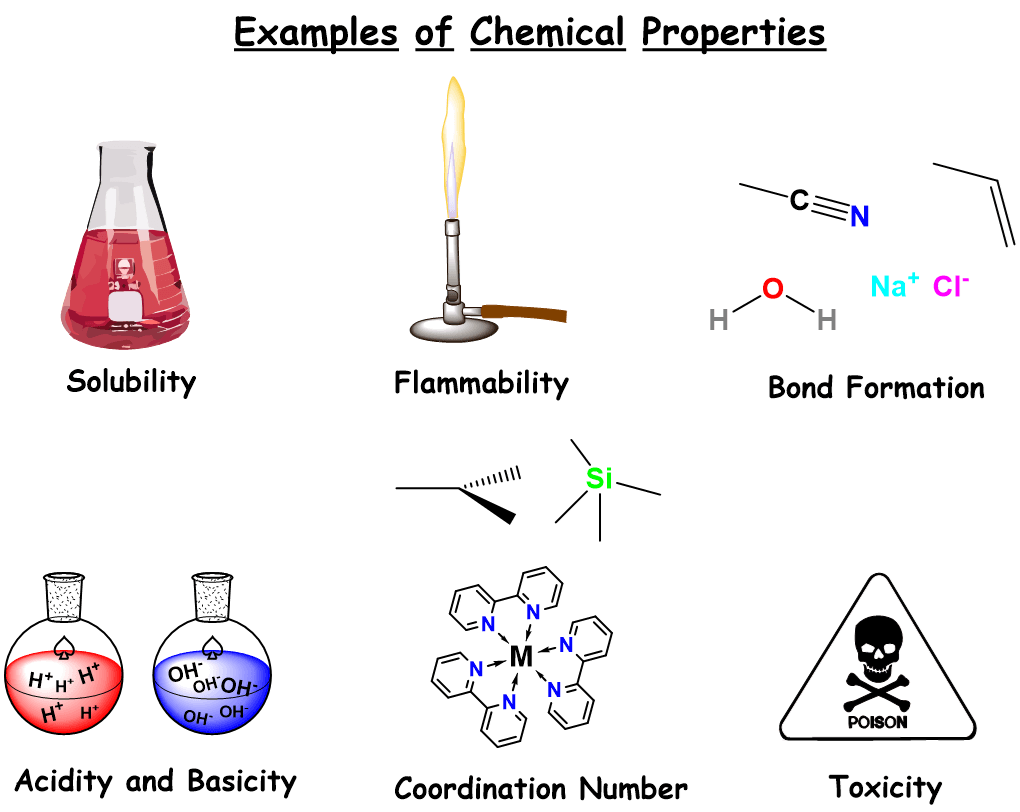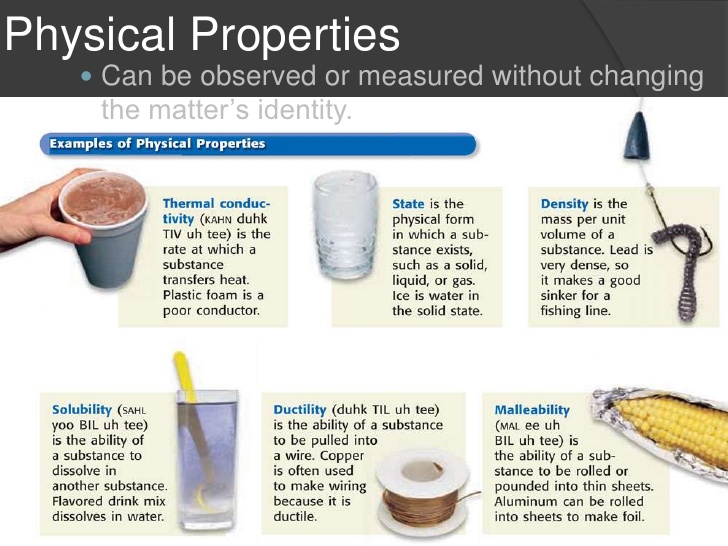How Do They Use Atoms to Explain Different Phyiscial Proporties
For starters let us take a look at carbon. How did Leucippus and Democritus use atoms to explain different physical properties.
What Are Physical Properties Definition From Corrosionpedia
Capable of being extended or shaped by beating with a hammer or by the pressure of rollers.

. Physical propertyAny property that is measurable whose value describes a physical systems state. Mass refers to the amount of matter. The melting point and boiling point are related to changes of the state of matter.
They do consist of parts which include protons neutrons and electrons but an atom is a basic chemical building block of matter. Solid liquid and gas. In chemistry a group is a vertical column in the periodic table of the chemical elements.
A balance allows an object to be matched with other objects of known mass. Assume that an electron wave making a standing wave in a hydrogen atom has a wavelength of 167 10. MalleableAble to be hammered into thin sheets.
However our knowledge of the properties of atoms reveals that different atoms attract electrons with different strengths resulting in very strong variations in ionization energies atomic radii and electron affinities. Their atoms join together to form molecules crystals or other structures. Each proton has a positive electrical charge.
Different materials can be made from atoms of the same element. The atoms are held together by chemical bonds. A chemical bond is a force of attraction between atoms or ions.
They used color taste etc- of materials came about because atoms in them had different shapes andor arrangements and orientations with respect to each other. An atom is the smallest unit of matter that retains all of the chemical properties of an element. Gold atoms cannot be broken down into anything smaller while still retaining the properties.
Mass is usually measured with a balance. The smallest particle of a substance that retains the chemical and physical properties of the substance and is composed of two or more atoms. Mendeleevs table had two problems.
Elements form compounds when they combine chemically. Physical properties are all determined by the amounts and type of atoms that compose items. Carbon C belongs to the family of elements known as non-metals.
Thomson determined the charge-to-mass ratio of the electron to be 176 10 11 coulombkilogram. Each period is associated with a quantum number n the first period with n1 second period with n2 and so forth. The three states of matter are.
According to these findings what is the mass of an electron. Matter can be described and classified by its observable properties eg visual aural textural by its uses and by whether it occurs naturally or is manufactured. The protons and neutrons are packed together into the center of the atom which is called the nucleus and the electrons which are.
Appearance texture color odor melting point boiling point density solubility polarity and many others. In fact his table successfully predicted the existence of gallium and. Three isotopes of hydrogen.
The bonding between C atoms and to other types of atoms is typically described as covalent bonding where each bond involves two electrons one from each of the bonded atoms. An atom is the smallest unit of matter that retains all of the chemical properties of an element. Within a period the available s and p valence orbitals of a specific quantum number n are getting filled.
For example a gold coin is simply a very large number of gold atoms molded into the shape of a coin with small amounts of other contaminating elements. In recent times we have begun to study matter at the very high temperatures and pressures which typically occur on the Sun or during re-entry from space. The types of intermolecular forces that occur in a substance will affect.
The properties of the material depend upon the bonding between the atoms and structure of the substance. Most atoms have three different subatomic particles inside them. A great variety of objects can be built up from a small set of pieces eg blocks construction sets.
There were some gaps in his periodic table When grouped by properties most elements had increasing atomic masses but some were out of order. To understand how elements come together we must first discuss the smallest component or building block of an element the atom. Mass and volume are just two ways to describe the physical property of a substance.
The quantum mechanical model of the atoms also explains why the periodic table has periods. Physical properties and intermolecular forces ESCKQ Have the learners research the safety data for various compounds especially those being used in the experiments in this section as a way of linking the properties of organic molecules with their molecular structure. A group of like or different atoms held together by.
Nuclear reactions such as radioactive decay and fission can break apart atoms. Protons neutrons and electrons. Before the 20th century there was no theory that could satisfactorily explain the origin of the spectra of the elements or the reason why different elements have different spectra.
The three normal phases of matter listed on the slide have been known for many years and studied in physics and chemistry classes. To explain the gaps Mendeleev said that the gaps were due to undiscovered elements. Different properties are suited to different purposes.
Atoms cannot be divided using chemicals. For example one gold atom has all of the properties of gold in that it is a solid metal at room temperature. Millikan determined the charge on the electron to be 160 10 19 coulomb.
It occurs when atoms share or transfer valence electrons. In our covalent bonding model we have assumed that atoms share electrons to form a bond. Plasma - the fourth phase.
All matter may exist in any of three physical states of matter. All hydrogen atoms contain one proton and one electron but they can contain different numbers of neutrons. The quantitative understanding of the elemental spectra needed the development of a fundamentally new physical theory and the spectra of the simplest atoms played the key role in the.
Each electron has a negative electrical charge.

Physical Vs Chemical Properties Definition Examples Expii

3 Ways To Study The Chemical And Physical Properties Of Atoms In The Periodic Table

3 Ways To Study The Chemical And Physical Properties Of Atoms In The Periodic Table

1 4 Classification And Properties Of Matter Chemistry Libretexts
Comments
Post a Comment